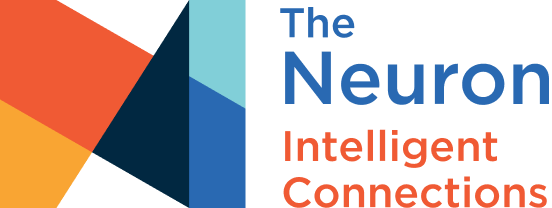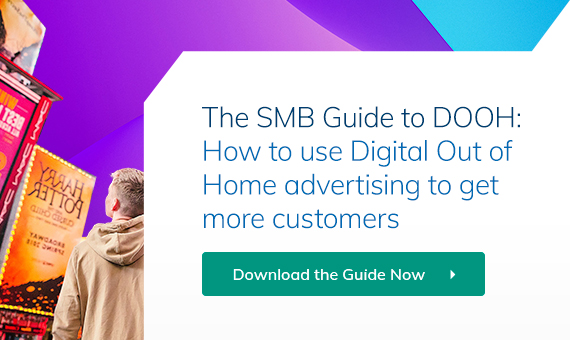In today’s fast-paced and digitally driven world, where consumers are constantly bombarded with advertisements, advertising agencies face the challenge of capturing attention and making a lasting impact. In this dynamic landscape, Digital-Out-of-Home (DOOH) advertising has emerged as a powerful and effective tool for agencies to enhance their campaigns and engage with consumers in unique and compelling ways. Unlike traditional static billboards and posters, DOOH leverages digital screens strategically placed in public spaces to deliver dynamic and targeted content.
This blog delves into the reasons why agencies should wholeheartedly embrace DOOH advertising, examining its cost-effective approach for advertisers with smaller budgets, the ability to create personalized advertising messages, the power of place-based media in reaching specific audiences, and the advantage of working with dynamic content instead of static images. By understanding the immense potential of DOOH advertising, agencies can unlock new avenues of creativity, amplify their reach, and achieve greater campaign effectiveness in an ever-evolving advertising landscape. Now with the use of programmatic DOOH (pDOOH), you enjoy innovative ways to reach a larger audience and promote your brands. pDOOH is the automated buying and selling of DOOH advertising space in real-time, using data-driven targeting and optimization to deliver dynamic and contextually relevant content to specific audiences.
So, why should agencies embrace pDOOH advertising and include it in their marketing mix?
- Cost-Effective Approach for Advertisers With Smaller Budgets
One of the primary advantages of DOOH advertising is its cost-effectiveness, particularly for advertisers with smaller budgets. Traditional Out-of-Home (OOH) advertising methods, such as billboards or posters, often involve high production and maintenance costs. In contrast, DOOH allows for more flexibility and affordability. With the use of digital screens and dynamic content, agencies can easily update and change their advertisements without the need for expensive reprints. This flexibility enables agencies with smaller budgets to maximize their advertising efforts and compete with larger brands on a more level playing field.
Say for example a local startup selling eco-friendly cleaning products has developed a new product line. As a small business, it has limited funds for advertising but wants to create awareness and reach its target audience effectively. Instead of investing in expensive television or print ads, it decides to leverage the cost-effective approach of Digital Out-of-Home advertising. By strategically placing digital screens in shopping malls, grocery stores, and community centers, it can showcase its environmentally conscious products to shoppers and passersby. With the ability to update the content easily, the startup can promote its latest offerings, special discounts, and educational messages about the importance of sustainability. This cost-effective DOOH strategy allows the startup to maximize its advertising budget and engage with a relevant audience, ultimately driving more awareness and sales for its eco-friendly cleaning products.

(Image source: mvix.com)
- Ability to Create Personalized Advertising Messages
Personalization has become a key aspect of successful marketing campaigns, and DOOH advertising offers agencies the ability to create personalized advertising messages. Through advanced data analytics and real-time audience insights, agencies can tailor their advertisements to specific demographics, locations, or even weather conditions. This level of customization allows agencies to deliver highly relevant and engaging content, increasing the chances of capturing the attention of their target audience. By delivering personalized messages, agencies can foster stronger connections with consumers and enhance the overall effectiveness of their campaigns.
Imagine a popular fitness apparel brand, that recognizes the power of personalized marketing, aims to connect with fitness enthusiasts on a deeper level. It decides to embrace DOOH advertising to create personalized advertising messages. It collects data on customer preferences, including workout routines, fitness goals, and demographic information. Armed with these insights, it utilizes DOOH screens strategically placed near gyms, parks, and sports centers to deliver targeted messages. For instance, when a known yoga enthusiast approaches a screen, the content dynamically changes to showcase the latest yoga collection with tailored promotions and recommendations based on their past purchases. By personalizing its DOOH campaigns, the apparel brand can successfully capture the attention and loyalty of its target audience, fostering a stronger connection between the brand and fitness enthusiasts.

(Image source: oemkiosks.com)
- Place-Based Media Allows You to Reach Specific Audiences in Public Spaces
DOOH advertising leverages place-based media, enabling agencies to reach specific audiences in public spaces. Whether it’s a busy shopping mall, transportation hub, or a popular tourist destination, digital screens strategically placed in these locations attract a diverse range of individuals. Agencies can take advantage of this captive audience by delivering targeted and contextually relevant dynamic content.
For instance, a music streaming service wants to expand its user base by targeting music lovers in urban areas. To achieve this, it leverages the power of place-based media in its DOOH advertising strategy. It identifies popular music venues, concert halls, and trendy cafes as prime locations for reaching its target audience. It strategically places digital screens in these areas to captivate music enthusiasts during their leisure time. The screens showcase dynamic visuals of popular artists, upcoming concerts, and exclusive playlists tailored to the local music scene. By utilizing place-based media, it effectively taps into the passion and interests of its target audience, creating a strong presence in public spaces where music lovers congregate. This approach allows the brand to reach specific audiences at the right moment, generating buzz and driving user acquisition for its music streaming service.
- Ability to Work With Dynamic Content vs. Static Images
One of the distinguishing features of pDOOH advertising is the ability to work with dynamic content instead of static images. This dynamic nature opens up new avenues for creativity and engagement. Agencies can leverage motion graphics, animations, videos, and interactive elements to captivate their audience and deliver memorable experiences. Dynamic content has a higher likelihood of grabbing attention and leaving a lasting impression on viewers compared to traditional static images. By embracing dynamic content in pDOOH campaigns, agencies can stand out from the competition and create a more immersive and interactive advertising experience.
Take for example a trendy fashion brand that wants to make a bold statement with its advertising campaign and stand out in a crowded marketplace. It chooses DOOH advertising for its ability to work with dynamic content rather than static images. It designs visually stunning and engaging advertisements that showcase its latest fashion collections through captivating motion graphics and videos. Instead of relying on traditional static billboards, its DOOH screens come to life with models strutting down virtual runways, showcasing the fluidity and versatility of its clothing lines. By embracing dynamic content, it captures the attention of passersby and creates an immersive experience that sparks curiosity and excitement. This dynamic approach to advertising sets brands apart from competitors and reinforces the brand as a leader in innovative and trendsetting fashion.

(Image source: billups.com)
As the advertising landscape evolves, agencies must adapt and explore innovative methods to reach their target audience effectively. DOOH advertising offers agencies a cost-effective approach, enabling them to compete with larger brands even with smaller budgets. The ability to create personalized advertising messages allows agencies to deliver highly relevant content to consumers, fostering stronger connections and increasing campaign effectiveness. Additionally, DOOH’s place-based media reaches specific audiences in public spaces, providing opportunities for targeted advertising. Lastly, the use of dynamic content in DOOH campaigns allows agencies to engage viewers with captivating visuals and interactive elements.
By embracing DOOH advertising, agencies can stay at the forefront of advertising trends, maximize their reach, and drive better results for their clients. The future of advertising lies in the seamless integration of digital technology into the physical world, and DOOH advertising is poised to play a significant role in this transformation.
Get Started with Programmatic DOOH Today
With The Neuron, your campaigns can be created and run via single-click processes on a dashboard that’s easy to use and navigate. You can then use the platform to track your campaign and view in-depth analytics so you can adjust and optimize in real-time.
It couldn’t be easier to get started with programmatic DOOH. Start now!

